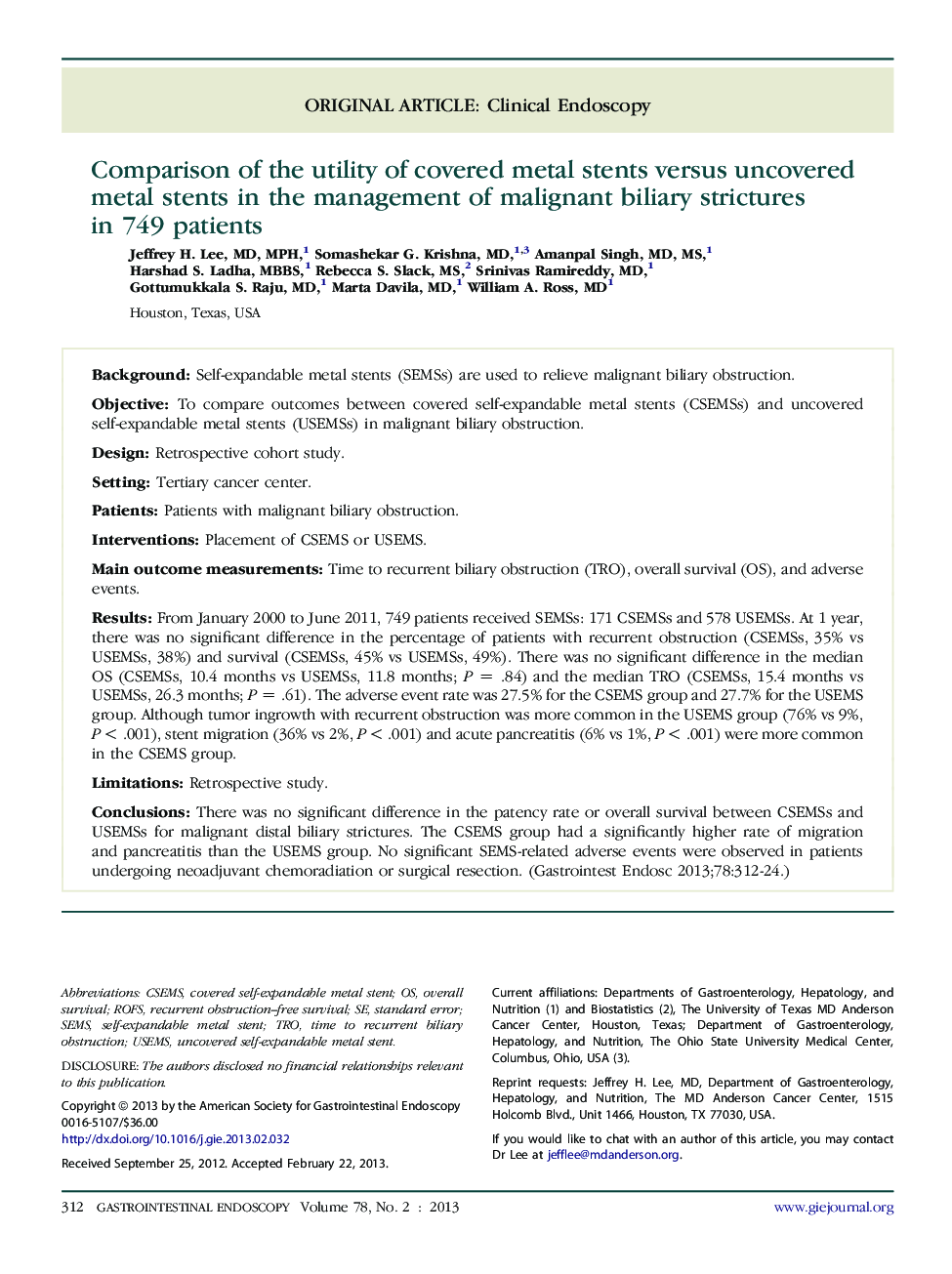| Article ID | Journal | Published Year | Pages | File Type |
|---|---|---|---|---|
| 3303909 | Gastrointestinal Endoscopy | 2013 | 13 Pages |
BackgroundSelf-expandable metal stents (SEMSs) are used to relieve malignant biliary obstruction.ObjectiveTo compare outcomes between covered self-expandable metal stents (CSEMSs) and uncovered self-expandable metal stents (USEMSs) in malignant biliary obstruction.DesignRetrospective cohort study.SettingTertiary cancer center.PatientsPatients with malignant biliary obstruction.InterventionsPlacement of CSEMS or USEMS.Main outcome measurementsTime to recurrent biliary obstruction (TRO), overall survival (OS), and adverse events.ResultsFrom January 2000 to June 2011, 749 patients received SEMSs: 171 CSEMSs and 578 USEMSs. At 1 year, there was no significant difference in the percentage of patients with recurrent obstruction (CSEMSs, 35% vs USEMSs, 38%) and survival (CSEMSs, 45% vs USEMSs, 49%). There was no significant difference in the median OS (CSEMSs, 10.4 months vs USEMSs, 11.8 months; P = .84) and the median TRO (CSEMSs, 15.4 months vs USEMSs, 26.3 months; P = .61). The adverse event rate was 27.5% for the CSEMS group and 27.7% for the USEMS group. Although tumor ingrowth with recurrent obstruction was more common in the USEMS group (76% vs 9%, P < .001), stent migration (36% vs 2%, P < .001) and acute pancreatitis (6% vs 1%, P < .001) were more common in the CSEMS group.LimitationsRetrospective study.ConclusionsThere was no significant difference in the patency rate or overall survival between CSEMSs and USEMSs for malignant distal biliary strictures. The CSEMS group had a significantly higher rate of migration and pancreatitis than the USEMS group. No significant SEMS-related adverse events were observed in patients undergoing neoadjuvant chemoradiation or surgical resection.
